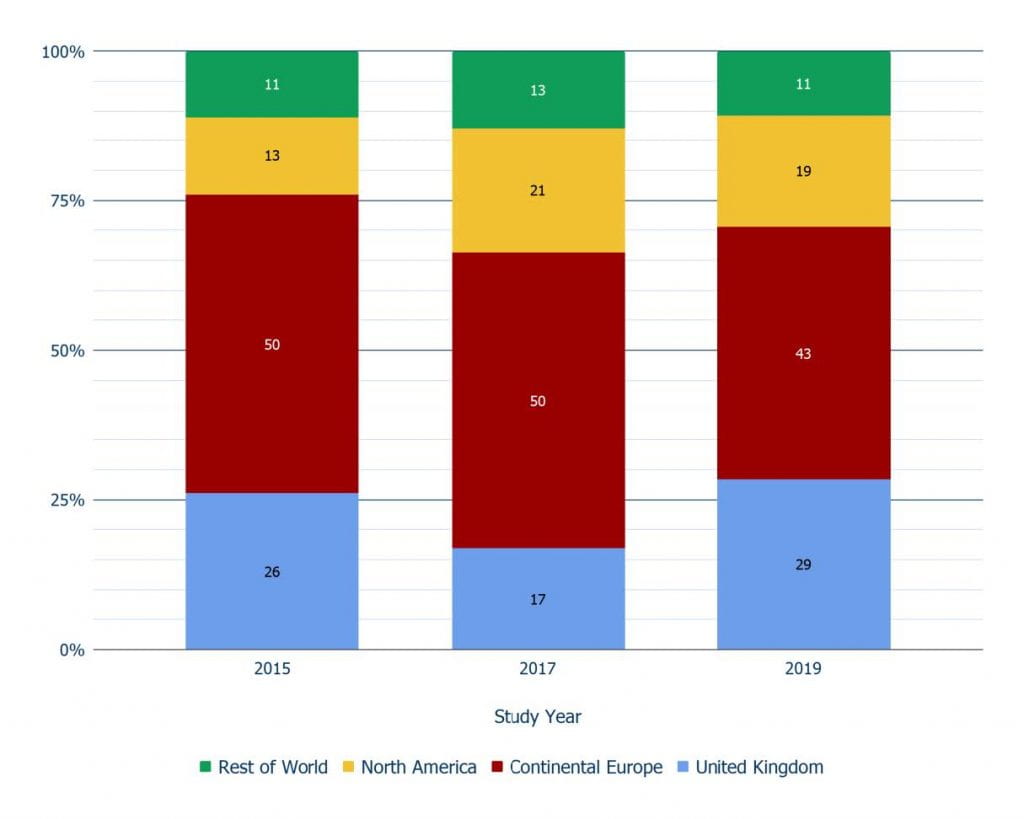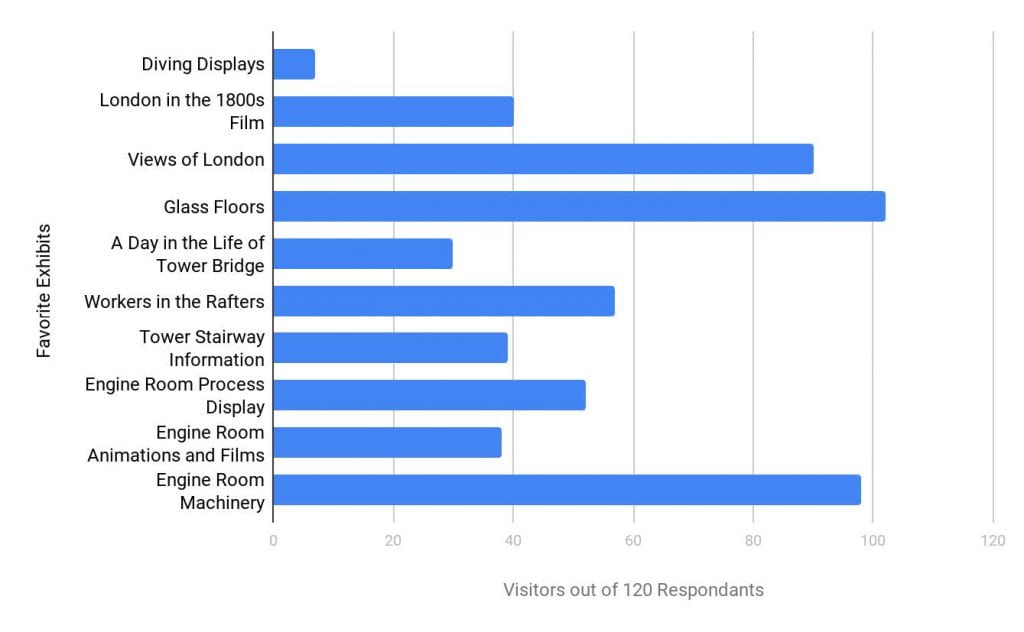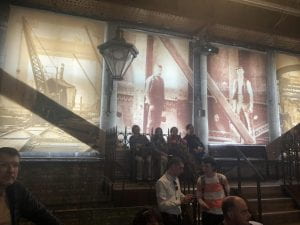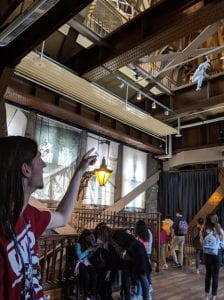Evaluating Exhibit Performance at Tower Bridge in London
| Sponsor: | Tower Bridge Exhibition |  |
| Sponsor Liaison: | Dirk Bennett | |
| Student Team: |
Ryan Bowe |
|
| Abstract: | We worked with the Tower Bridge Exhibition to determine visitor comprehension and satisfaction on recent redesigns of their exhibits. Using a combination of surveys and observation, we found that visitor demographics have not changed and that visitors described the exhibit content as too easy, and engaged with exhibit contents and hosts less than expected, yet still found the Tower Bridge Exhibition enjoyable. Our recommendations included increasing the visibility and augmenting the information of existing exhibits, and increasing host interaction with visitors. |
|
| Link: | LO19-TB_Final_Report-22bmwo8 LO19-TB_IQPFinalPresentation-1v5nuih |
|
Executive Summary
The Tower Bridge Exhibition is an attraction run by the City of London within Tower Bridge over the Thames River. In 2015, the new exhibition development manager, Dirk Bennett, established a plan to renovate the Tower Bridge Exhibition into a more polished attraction. Through this renovation, exhibition managers hope to showcase a comprehensive, chronological history of Tower Bridge by developing exhibits that are both coherent and engaging for the exhibition’s audience. More specifically, the exhibits throughout the museum must sufficiently convey key information about important moments in the Bridge’s history at an appropriate level of detail. However, in order to understand how the exhibition meets these objectives, it is crucial for managers to learn who their audience is and how satisfied they are with the current exhibits. An investigation into these factors was already conducted for the Engine Rooms exhibit in 2017, but the rest of the exhibition lacked this analysis. Therefore, the goal of this project was to assist the Tower Bridge Exhibition managers in determining the effectiveness of the new exhibits in the North and South Towers, and to reevaluate the Engine Rooms. To achieve this goal, we established four objectives as logical stages of this project:
1. To measure visitor engagement within the Tower Bridge exhibits;
2. To determine the demographic profile of exhibit attendees;
3. To rate visitor satisfaction with the Tower Bridge exhibits; and
4. To assess visitor comprehension of content in the Tower Bridge exhibits.
Visitor engagement is a crucial factor in assessing which exhibits are effective. How long a visitor spends at a particular display provides insights into how an exhibit is functioning. We utilized direct observation of visitors to discover dwell times and levels of engagement at locations within the two Towers and the Engine Room Exhibits. We constructed an engagement scale from 1-3, where 1 indicated a visitor missed or ignored an exhibit feature; 2 indicated that a visitor noticed an exhibit feature but was not interested enough to stop and engage fully; and 3 indicated full engagement with an exhibit feature. We used this same scale again to rate the degree of interaction with Welcome Hosts stationed throughout the exhibition.
With over 2000 observations, we determined that visitor engagement throughout the entire exhibition was below expectations, especially in the North and South Towers. People frequently missed key portions of a specific exhibit, or were not interested in an exhibit element enough to stop and investigate further. This was further demonstrated by dwell times in exhibits that were consistently under one minute for the Tower exhibits. In the Engine Rooms, dwell times were better than in the Towers, with visitors staying for a median closer to two minutes. Regardless, both times are shorter than the runtime of many of the videos and animations found inside many of these exhibits, revealing that the majority of people do not stay to watch these in their entirety. This issue became compounded by the fact that Welcome Hosts, whose role is to narrate exhibition films and to provide extra information about some of the exhibits, did not interact with visitors nearly 80% of the time, further lowering the overall engagement with exhibition content. We learned that this engagement issue could be resolved simply by increasing host interaction with visitors since, when host interaction occurred, it drastically increased overall engagement (Table 1).
Table 1. Engagement Improvements from Welcome Host Interaction
To determine the visitor demographic profile, we administered a voluntary survey at the end of the exhibition to 120 visitors. This survey revealed information regarding nationality, interest in key topics covered at the Bridge, English proficiency, and group size. The nationality and language proficiency gave insight into who visits Tower Bridge and what language accessibility features the exhibition may need. Additionally, it provides long term insight into marketing for the Bridge in regions with few visitors. The demographic profile of visitors was very similar to previous studies of this topic conducted in 2015 and 2017. We learned that nearly half of the visitors come from Continental Europe, about 25% come from the United Kingdom, and an additional 20% come from North America (Figure 1).
Figure 1. Demographic Profile of Visitors in 2015, 2017, and 2019
Additionally, most groups visiting the Tower Bridge Exhibition tend to be families, with only 13% of visitors belonging to other types of groups and 17% of visitors coming alone. We also determined that most people visiting had interests in history and engineering, both key themes throughout Tower Bridge.
Visitor satisfaction was also determined through the voluntary survey. The survey requested feedback on the visitors enjoyment of the Tower Bridge exhibits and of the exhibition as a whole. The survey results revealed that Tower Bridge is highly popular among its visitors. When asked how they would rate their overall enjoyment of Tower Bridge, every visitor responded positively, with no survey responder providing a negative opinion of the exhibition as a whole. We also learned that most visitors listed walkway exhibits such as the views of London and the glass floors found within as their favorites, along with the steam engines found in the Engine Rooms and the worker statues above the South 4 exhibit. The least popular exhibits include the “Day in the Life of Tower Bridge” video and the Engine Room Animations.
Figure 2. Visitors’ Favorite Exhibits at Tower Bridge
Finally, visitor comprehension was obtained through specific questions within the survey. These questions intended to address the overall difficulty of Tower Bridge as well as whether visitors learned about the key themes of Tower Bridge: how the Bridge used to work, how the Bridge works today, and the people that worked at the Bridge. These were meant to address how well the Bridge is able to express its information, and whether the redesigned exhibits uphold the mission presented in the interpretation plan. When we analyzed our survey results on visitor comprehension, we learned that visitors find Tower Bridge’s information too easy for their preference. Additionally, we learned that one of the three key topics covered in the revamped exhibition, how the Bridge operates in the modern day, was not covered sufficiently for many visitors to understand (Figure 3). These both reveal that some work may have to be done, both in the form of providing more technical content about the Bridge, and more specifically discussion regarding both the transition from steam to electrical power, as well as how the Bridge operates during modern day bridge lifts.
Figure 3. Visitor Comprehension of Modern Operation
We developed several recommendations for improving engagement, accessibility, and visitor satisfaction. Our first set of recommendations consists of small and easily fixable issues. First, we recommend opening up North Tower’s exhibit on the Second Floor in the off-peak season of the attraction, since they currently are often closed to the public. We found that this exhibit was very popular, and closing it off detracted from the overall experience. In main exhibits, we found that banners of historical workers and architects such as the ones pictured in Figure 4 were often skipped due to awkward positioning and lack of supplementary information. These exhibits, then can benefit from the implementation of signage that better explains the significance of the banners.
Figure 4. Worker Banners without Descriptive Content
Next, we found that the button that operated an animatronic display showing the Bridge lift process was easily missed due to its placement. We recommend that Tower Bridge managers either insert signage that points out the button more conspicuously, or move the button to a more visible location on the display. Finally, we noticed that people frequently mistook monitors found throughout the Engine Rooms as touchscreens. However, Tower Bridge managers are hesitant to implement touchscreen devices. To alleviate confusion and improve the lifespan of the electronics, we recommend implementing signage that indicate that these devices were not touchscreens.
More specific recommendations deal with Welcome Host interaction, Exhibit Design, and Video Styling. First, we recommend that to deal with low interaction between hosts and visitors, that the managers at Tower Bridge should encourage more narration and interaction on the part of the hosts. Additionally, we noticed during our surveying that many people had questions in the Engine Rooms exhibit, a region of the museum notably without any host presence. As such, we also suggest adding a welcome host to the Engine Rooms that can answer questions about many of the more technical elements of Tower Bridge. In order to overcome low engagement scores, especially with hard to see exhibits, we recommend implementing signage to both provide more information about the content and also direct attention to otherwise missed exhibit elements. In one highly popular exhibit among those who saw it, which contained statues of workers above the heads of visitors in the South Tower, the majority of visitors still missed the exhibit during their visit. We recommend inserting an additional statue at ground level, where it is more visible, either pointing at or shouting to the other statues in the rafters of the Tower (Figure 5).
Figure 5. Site for an Additional Worker in the Rafter
To deal with the lack of interest in some of the videos and animations, we propose a few changes here too. First, we recommend replacing a video that takes visitors through the average day at Tower Bridge. This video is unpopular, drawing disdain from both visitors and staff due to its lack of relevance toward the content in Tower Bridge. Next, to overcome language barriers, we recommend that Tower Bridge managers implement an audio tour into their exhibition, as it would allow more people to understand the Bridge’s fascinating history.
Our final recommendation could likely solve several problems at once. Many visitors find that they learned very little about modern bridge lifts, many wished they could have seen more content, and some visitors even expressed an interest in visiting the Control Rooms, a section of Tower Bridge not open to the public. Our recommendation to solve all these problems is to fill some of the empty space in the South Tower exhibits with content about how the Bridge operates today. This could include providing either pictures of the Control Rooms or even provide some of the machinery such as levers, cranks, and dials, that could be found in the Control Rooms during its early operation. This would allow people to see more content, more specifically about how the Bridge operates.








